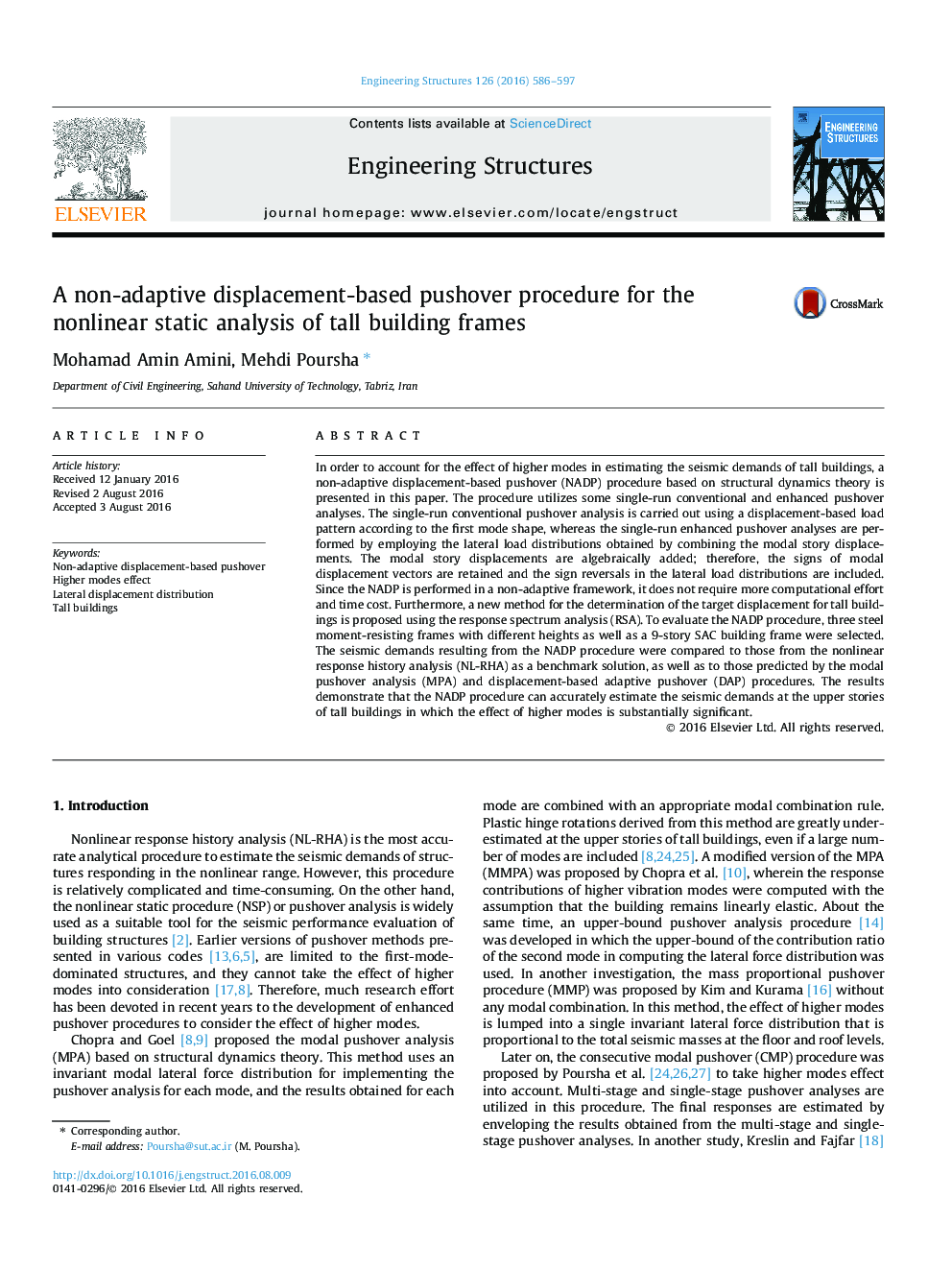| Article ID | Journal | Published Year | Pages | File Type |
|---|---|---|---|---|
| 4920790 | Engineering Structures | 2016 | 12 Pages |
Abstract
In order to account for the effect of higher modes in estimating the seismic demands of tall buildings, a non-adaptive displacement-based pushover (NADP) procedure based on structural dynamics theory is presented in this paper. The procedure utilizes some single-run conventional and enhanced pushover analyses. The single-run conventional pushover analysis is carried out using a displacement-based load pattern according to the first mode shape, whereas the single-run enhanced pushover analyses are performed by employing the lateral load distributions obtained by combining the modal story displacements. The modal story displacements are algebraically added; therefore, the signs of modal displacement vectors are retained and the sign reversals in the lateral load distributions are included. Since the NADP is performed in a non-adaptive framework, it does not require more computational effort and time cost. Furthermore, a new method for the determination of the target displacement for tall buildings is proposed using the response spectrum analysis (RSA). To evaluate the NADP procedure, three steel moment-resisting frames with different heights as well as a 9-story SAC building frame were selected. The seismic demands resulting from the NADP procedure were compared to those from the nonlinear response history analysis (NL-RHA) as a benchmark solution, as well as to those predicted by the modal pushover analysis (MPA) and displacement-based adaptive pushover (DAP) procedures. The results demonstrate that the NADP procedure can accurately estimate the seismic demands at the upper stories of tall buildings in which the effect of higher modes is substantially significant.
Keywords
Related Topics
Physical Sciences and Engineering
Earth and Planetary Sciences
Geotechnical Engineering and Engineering Geology
Authors
Mohamad Amin Amini, Mehdi Poursha,
